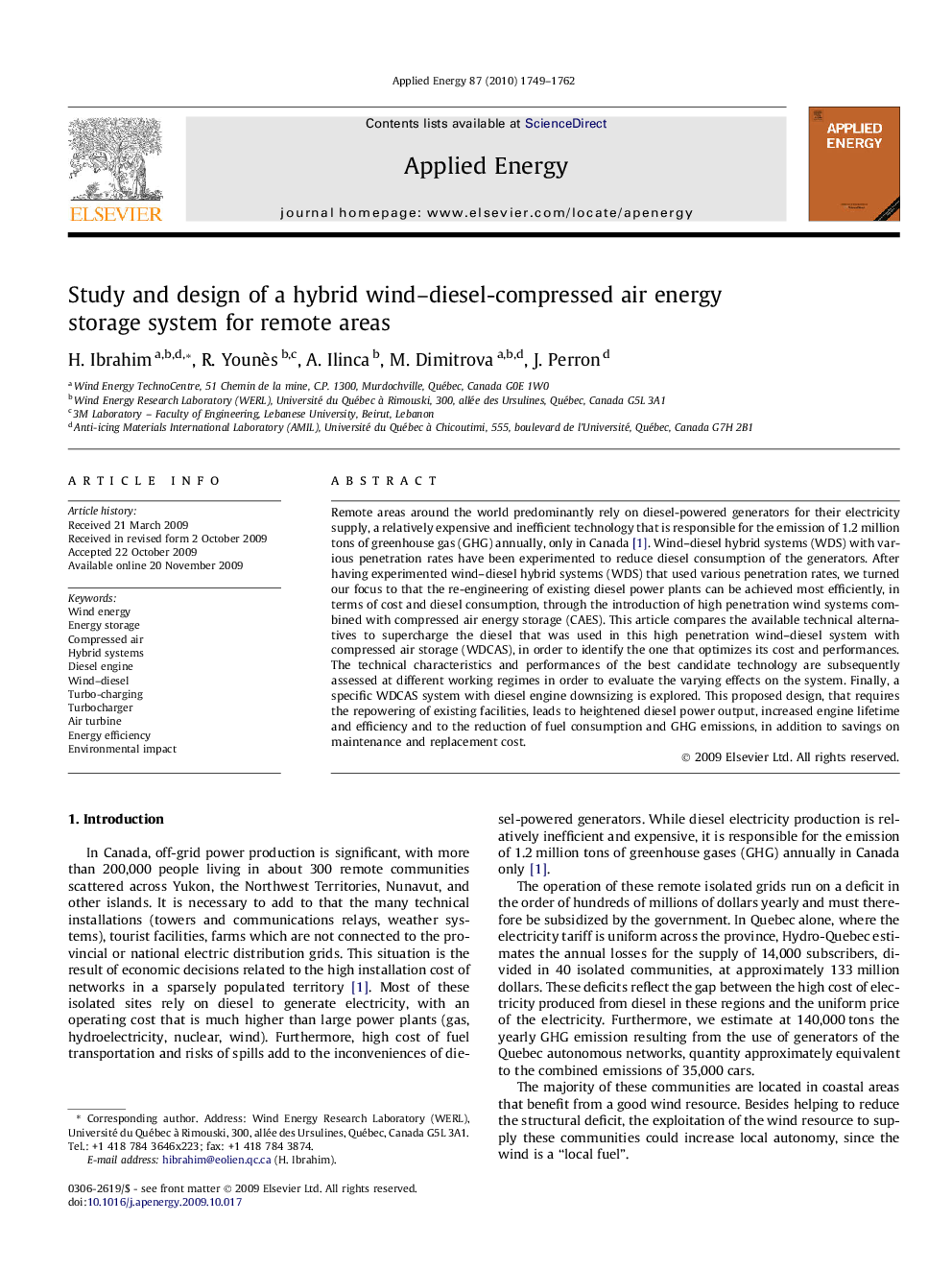| Article ID | Journal | Published Year | Pages | File Type |
|---|---|---|---|---|
| 244490 | Applied Energy | 2010 | 14 Pages |
Remote areas around the world predominantly rely on diesel-powered generators for their electricity supply, a relatively expensive and inefficient technology that is responsible for the emission of 1.2 million tons of greenhouse gas (GHG) annually, only in Canada [1]. Wind–diesel hybrid systems (WDS) with various penetration rates have been experimented to reduce diesel consumption of the generators. After having experimented wind–diesel hybrid systems (WDS) that used various penetration rates, we turned our focus to that the re-engineering of existing diesel power plants can be achieved most efficiently, in terms of cost and diesel consumption, through the introduction of high penetration wind systems combined with compressed air energy storage (CAES). This article compares the available technical alternatives to supercharge the diesel that was used in this high penetration wind–diesel system with compressed air storage (WDCAS), in order to identify the one that optimizes its cost and performances. The technical characteristics and performances of the best candidate technology are subsequently assessed at different working regimes in order to evaluate the varying effects on the system. Finally, a specific WDCAS system with diesel engine downsizing is explored. This proposed design, that requires the repowering of existing facilities, leads to heightened diesel power output, increased engine lifetime and efficiency and to the reduction of fuel consumption and GHG emissions, in addition to savings on maintenance and replacement cost.
